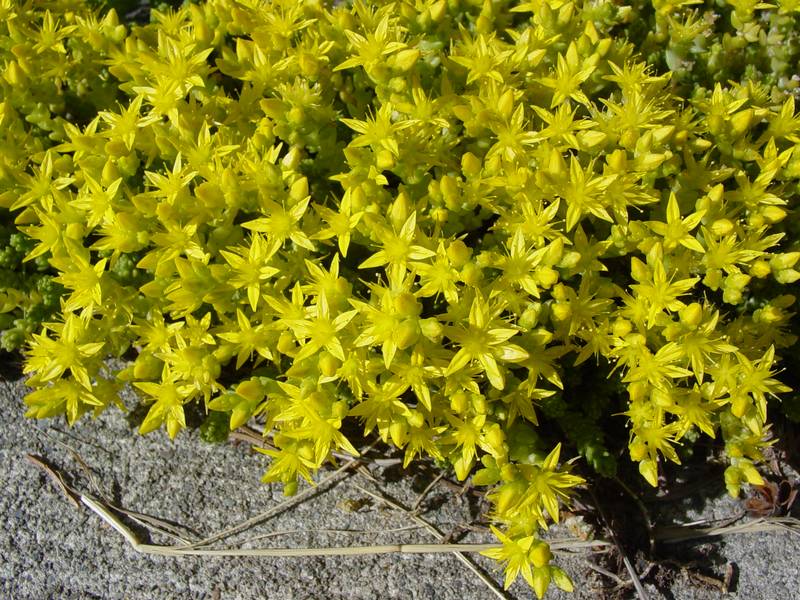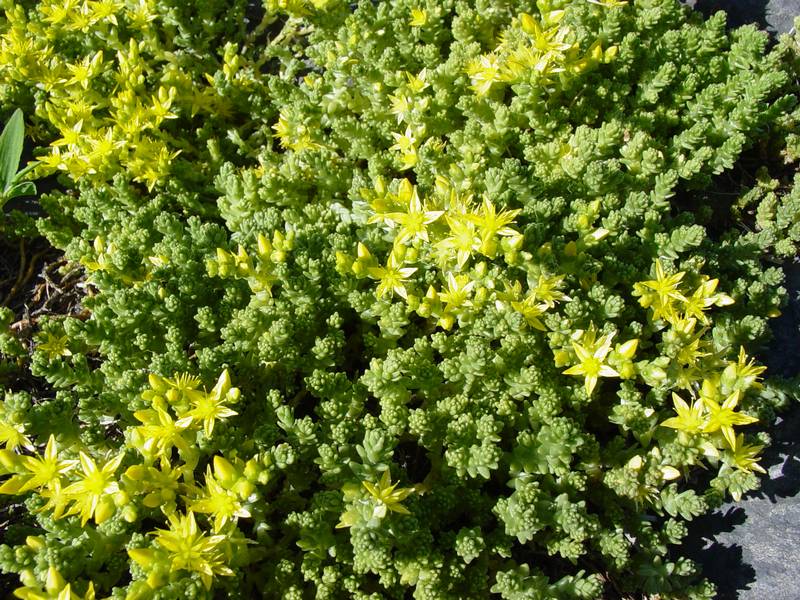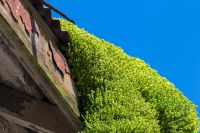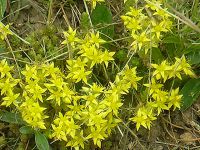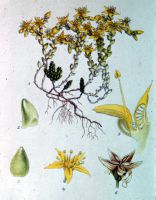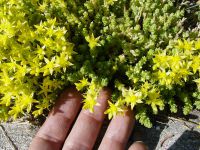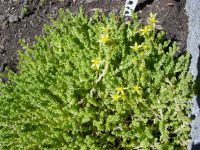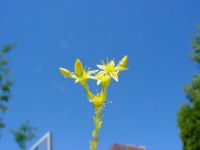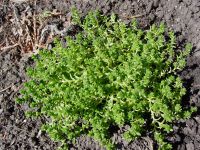Distribution: Occurring chiefly west of the Cascades in Washington; British Columbia south to Oregon, east across Canada, and the central, southeastern, and northeastern U.S. to the Atlantic Coast.
Habitat: Disturbed ground at low elevation.
Flowers: June-August
Origin: Introduced from Europe
Growth Duration: Perennial
Conservation Status: Not of concern
Pollination: Bees, flies
Glabrous, mat-forming perennial from rhizomes, the flowering stems up to 1 dm. tall.
Leaves alternate, fleshy, evergreen, ovoid, 3-5 mm. long, sessile.
Inflorescence of branching cymes; sepals 5, lanceolate, 2-3.5 mm. long, obtuse; petals 5, bright yellow, distinct, lanceolate, spreading, about 5 mm. long; stamens 10, 5 attached to the base of the petals.
Follicles 5, spreading, each with a small gland at the base, and tipped by the tapered style.
Publication: Sp. Pl. 1: 432. 1753. 1753.
PNW Herbaria: Specimen records of Sedum acre in the Consortium of Pacific Northwest Herbaria database
WA Flora Checklist: Sedum acre checklist entry
OregonFlora: Sedum acre information
E-Flora BC: Sedum acre atlas page
CalPhotos: Sedum acre photos

